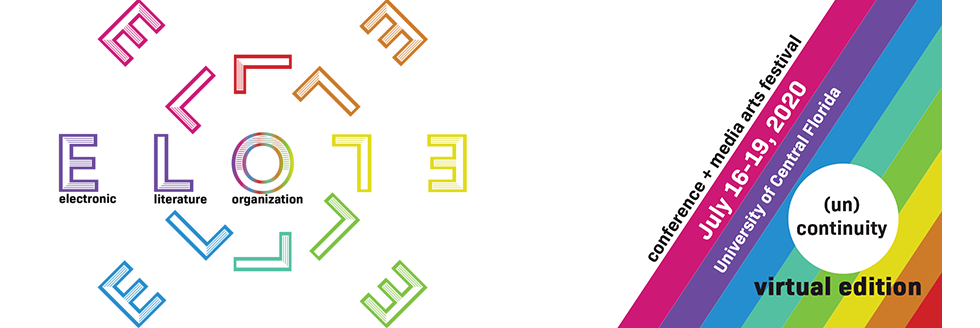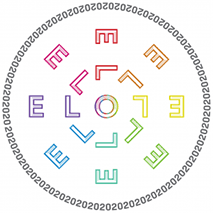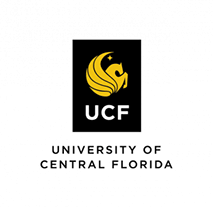Proposal Title
“I Have Weird Ideas About What It Means To Be A Man”: Aughties Multimedia Masculinity in Achewood
Submission Type
Conference Talk - Individual
Abstract
In 2007, Lev Grossman, writing for Time Magazine, named Chris Onstad’s comic Achewood the year’s best graphic novel, despite it not being a graphic novel in “every, or maybe any, traditional sense.” Achewood isn’t quite a graphic novel primarily because of its multimedial form; in addition to the webcomic, Onstad wrote a series of “zines” in the voice of Cassandra “Roast Beef” Kazenzakis, a cookbook by the full cast, three novellas by the character “Nice Pete” Cropes, an advice column from character Ray Smuckles, and, most substantially, twelve different blogs in the distinct voices of the strip’s cast.
Of the twelve characters major enough to have their own blog, only one of them, Molly, is not male. This is perhaps the most conventional element of Achewood: like many of the webcomics that became popular in the aughts, Achewood is by a man and about men. This reflects Onstad’s general concern with masculinity throughout the strip and its peripheral texts. What sets the masculinity of Achewood apart from that of XKCD, Penny Arcade, and the other ‘manly’ webcomics of the aughts, however, is its precarity. Although several of the major arcs of the comic strip, including “The Great Outdoor Fight” and “The Badass Games,” present the characters competing to determine who is “the baddest dude in town,” victory in these competitions comes not from hewing most closely to a traditional understanding of masculinity, but instead from destroying that very understanding. As Ray puts it, “why should the Fight get to say how the Fight is won or lost! Become the ruling body, dude!” Those rules end up articulated in the strip’s digital-first paratexts, like the “Sex Issue” of Roast Beef’s zine or Ray’s Place, a long-running feature explicitly formulated as a rejoinder to Playboy’s advice column.
Crucially, the ‘rules’ that end up articulated are in no way monolithic. Indeed, what Achewood ultimately presents is a collection of fragmentary masculinities that counters normative or traditional definitions. That this presentation is staged across multiple digital-first platforms--and in particular the utilization of the personal blog format as a privileged point of access into the interiority of its characters--is atypical, effective, and indicative of the degree to which Achewood can rightly be called electronic literature.
This conference paper, then, will unpack how Achewood’s heterogeneric, multimedial form reflects its attitude towards masculinity as a fragmentary, discontinuous performance most successfully performed when not ‘performed’ at all. The self-conscious utilization of multiple genera makes possible the presentation of a collection of characters who themselves already represent non-traditional and non-neurotypical forms of masculinity not merely as punch-lines but as fully fleshed-out and sympathetic fictional subjects. By disseminating its male characters’ interiorities across a variety of born-digital media, Achewood offers a model of multimedia masculinity of profound depth and formal interest, particularly in a contemporary moment where gender performance is increasingly multimedial--strewn, as it is, across multiple social media platforms as much as it is embodied and in person.
“I Have Weird Ideas About What It Means To Be A Man”: Aughties Multimedia Masculinity in Achewood
In 2007, Lev Grossman, writing for Time Magazine, named Chris Onstad’s comic Achewood the year’s best graphic novel, despite it not being a graphic novel in “every, or maybe any, traditional sense.” Achewood isn’t quite a graphic novel primarily because of its multimedial form; in addition to the webcomic, Onstad wrote a series of “zines” in the voice of Cassandra “Roast Beef” Kazenzakis, a cookbook by the full cast, three novellas by the character “Nice Pete” Cropes, an advice column from character Ray Smuckles, and, most substantially, twelve different blogs in the distinct voices of the strip’s cast.
Of the twelve characters major enough to have their own blog, only one of them, Molly, is not male. This is perhaps the most conventional element of Achewood: like many of the webcomics that became popular in the aughts, Achewood is by a man and about men. This reflects Onstad’s general concern with masculinity throughout the strip and its peripheral texts. What sets the masculinity of Achewood apart from that of XKCD, Penny Arcade, and the other ‘manly’ webcomics of the aughts, however, is its precarity. Although several of the major arcs of the comic strip, including “The Great Outdoor Fight” and “The Badass Games,” present the characters competing to determine who is “the baddest dude in town,” victory in these competitions comes not from hewing most closely to a traditional understanding of masculinity, but instead from destroying that very understanding. As Ray puts it, “why should the Fight get to say how the Fight is won or lost! Become the ruling body, dude!” Those rules end up articulated in the strip’s digital-first paratexts, like the “Sex Issue” of Roast Beef’s zine or Ray’s Place, a long-running feature explicitly formulated as a rejoinder to Playboy’s advice column.
Crucially, the ‘rules’ that end up articulated are in no way monolithic. Indeed, what Achewood ultimately presents is a collection of fragmentary masculinities that counters normative or traditional definitions. That this presentation is staged across multiple digital-first platforms--and in particular the utilization of the personal blog format as a privileged point of access into the interiority of its characters--is atypical, effective, and indicative of the degree to which Achewood can rightly be called electronic literature.
This conference paper, then, will unpack how Achewood’s heterogeneric, multimedial form reflects its attitude towards masculinity as a fragmentary, discontinuous performance most successfully performed when not ‘performed’ at all. The self-conscious utilization of multiple genera makes possible the presentation of a collection of characters who themselves already represent non-traditional and non-neurotypical forms of masculinity not merely as punch-lines but as fully fleshed-out and sympathetic fictional subjects. By disseminating its male characters’ interiorities across a variety of born-digital media, Achewood offers a model of multimedia masculinity of profound depth and formal interest, particularly in a contemporary moment where gender performance is increasingly multimedial--strewn, as it is, across multiple social media platforms as much as it is embodied and in person.





Bio
Ken Alba is a PhD candidate in the Department of English at Boston University. His dissertation focuses on the relationship between literature and information technology, with a particular focus on post-45 Anglophone drama and newer works of electronic literature. More broadly, his work centers around the ways certain media technologies make possible (or impossible) certain kinds of literary and social performance, and how a careful reading of literature about the relationship between performance and technology can illuminate what identity – and identity categories like race and gender – looks like in the information age. His work has appeared in The Samuel Beckett Review, and he has an essay in Ibidem Press’s volume Pop Beckett.